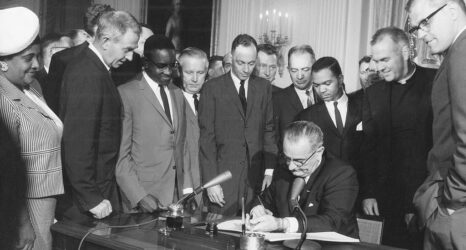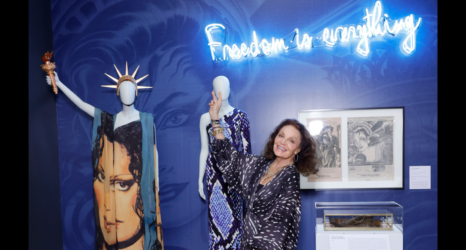Nancy Harkness Love broke the military gender barrier when she led 303 civilian women pilots for the Army Air Forces’ Ferrying Division in World War II. (“Ferrying” means to fly the aircraft—not passengers or cargo—from one place to another.) President Harry Truman awarded her the prestigious Air Medal for her job well done.
No one would describe Nancy Love as a kick-ass personality. To the contrary, her remarkable achievements came as the result of her focused, cool-headed leadership of the women in her charge coupled with her insight into how best to use women pilots in a military aviation setting. She stuck to her guns despite interference from Jacqueline Cochran, who promoted a very different concept.
Love’s success, and that of the women who flew for her, began with the December 1941 decisions the U.S. military was forced to make after Pearl Harbor.
We were not prepared for war. We lacked ships, aircraft, tanks, munitions—men. Case-in-point, we had too few pilots. Love recognized the pilot shortage and sold Ferrying Division Commander Colonel William H. Tunner on using experienced women pilots to pick up small training aircraft from the factories that built them and deliver those trainers to flight schools.
The first women Love recruited had a minimum 500 flight hours. Most had more—including a 35-year-old flight instructor and mother of three with 3500 hours, and a 23-year-old barnstormer with 2900. Every woman pilot who could deliver an aircraft freed a male pilot to be assigned to—you guessed it!—a more important job.
The women didn’t care. They wanted to fly for their country. Throughout 1943, Love’s pilots delivered trainer aircraft. Between May and October, their ranks grew.
Cochran, whose goal was to command a women’s air force, had sold AAF Commanding General “Hap” Arnold on training women pilots to do what she called the Army’s “dishwashing” jobs. In spite of this, the first 275 graduates of the Army’s only women’s flight school were sent to fly for the Ferrying Division where they were needed. Named Director of Women Pilots, Cochran coined the name WASP— Women Airforce Service Pilots—but Love retained the leadership of the women ferry pilots.
By 1944, the emphasis had changed. America and its Allies were winning the war. The crucial need now was swift fighter aircraft, called pursuits. These were complex, high-powered, single-engine, single-cockpit aircraft—only one pilot, your training flight was a solo. Pursuits were needed to escort and protect America’s four-engine B-17s and B-24s on bombing runs deep into Germany.
Training men to ferry pursuits proved to be a waste of valuable time, as the male pilots were more urgently needed to fly bombers overseas. Already, Nancy Love had flown the P-51. She was Tunner’s first woman pursuit pilot. Eight of her original squadron followed her lead. Tunner knew and trusted Nancy and he knew her women pilots could do the job.
Tunner was adamant: The women would ferry pursuits.
Fifteen of Love’s best pilots graduated in the first two classes at the newly opened Pursuit School. Throughout 1944, women ferried those newly built, high-powered aircraft to the docks at Newark, New Jersey—926 P-51s alone. There, the planes were loaded aboard ships bound for England and the war.
Unlike Cochran, Love was never interested in command. She wanted to fly aircraft, not a desk. But she worked with the men of the Ferrying Division to prove the concept that men and women pilots should be under the same command, treated as pilots, judged on their capabilities and allowed to transition into higher-performance aircraft as their skills permitted.
The airplane doesn’t “know” the sex of the pilot flying it.
Love had the full support and backing of the men she worked with in the Ferrying Division. Given her example and the record achieved by the women flying for her, Tunner and his men saw to it that male and female pilots were given the same opportunities for advancement—an early model for what exists in today’s military. But it wasn’t a done deal.
On December 20, 1944, the WASP were disbanded and sent home, though the war wasn’t over. Out-of-work male pilots and combat veterans returning home wanted those “dishwashing” jobs the women were doing. The “brass” caved. Women were banned from the cockpits of military aircraft. The WASP’s performance—stellar and greatly appreciated by their commanding officers—wasn’t the reason for the ban that lasted until the mid-1970s. The reason was gender politics at work.
What exists in today’s military is what Nancy Love and the men of the Ferrying Division first achieved in WWII. Male and female pilots fly and advance based on individual skills and determination—not their gender.
Sarah Rickman has written and published eight books about the women who flew in World War II. Nancy Love and the WASP Ferry Pilots of World War II was published in 2008; her second biography of Nancy will publish later in 2018. She earned a masters in Creative Writing from Antioch University Midwest, and while writing Nancy’s biography she earned her Sport Pilot license.





